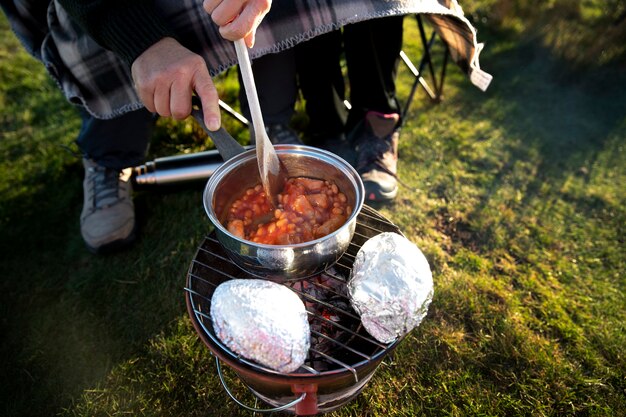Cooking Up Adventure: A Beginner’s Guide to Preparing and Fried Elk Heart
Quick Read
Cooking Up Adventure: A Beginner’s Guide to Preparing and Frying Elk Heart
Welcome, dear culinary neophytes, to our latest gastronomic journey! Today we’re embarking on an adventure that’s both thrilling and delectable – cooking and frying an elk heart. Yes, you read that right! Elk heart may not be a typical dish for beginners, but don’t let the unfamiliarity scare you off. With our easy-to-follow instructions and mouthwatering results, this experience will leave you yearning for more wild game adventures in the kitchen!
Obtaining Your Elk Heart
First things first: how does one even acquire an elk heart? Well, if you’re lucky enough to have a friend or family member who hunts, ask them for the next hunting season. Alternatively, check local butcher shops or specialty markets that cater to wild game meat. Be sure to inspect the heart thoroughly and ask the seller any questions you may have regarding its freshness and handling.
Preparation: Cleaning and Slicing
Step 1: Once you’ve obtained the elk heart, it’s time to clean and prepare it for cooking. Wear gloves to protect your hands from the cold and potential bacteria. Using a large bowl filled with cold water, submerge the heart and rinse it thoroughly inside and out to remove any dirt or debris. Pat the heart dry with paper towels.
Slicing
Step 2: Using a sharp knife, slice the heart into thin strips or small cubes. Be sure to work carefully and methodically to ensure even slices – this will help ensure even cooking.
Cooking: Frying Elk Heart
Seasoning
Step 3: Season the elk heart strips with salt, pepper, and any other desired spices. A simple garlic-pepper mix works great for newcomers.
Heating the Pan
Step 4: Heat a large skillet over medium-high heat with a tablespoon or two of oil. Once the pan is hot, add the elk heart strips in a single layer without overcrowding the pan. Cook for approximately 3 minutes on each side or until desired doneness is reached.
Resting
Step 5: Once cooked, remove the elk heart from the pan and let it rest for a few minutes before serving. This allows the juices to redistribute throughout the meat, resulting in an even more flavorful dish!
Enjoying Your Adventurous Meal
There you have it, folks – a complete beginner’s guide to preparing and frying elk heart. Not only will this dish tantalize your taste buds, but it will also leave you with a sense of accomplishment knowing that you’ve successfully cooked a unique and adventurous meal. Happy cooking!

Exploring the Thrill of Culinary Adventures with Elk Heart
Trying new and unique culinary experiences is always an exciting adventure, more so when it comes to hunting and wild game meats. Each new dish brings a unique flavor profile and texture that can leave an indelible impression. Among the popular North American game animals, elk stands out for its rich taste and versatility in various dishes.
Elk: A Popular North American Game Animal
Elk, also known as wapiti, is a large species of deer native to North America. With its distinctive large antlers and majestic appearance, elk has long been hunted for both sport and sustenance.
The Significance of Elk Heart
While most people are familiar with elk meat, some might be hesitant to try the heart. However, learning how to prepare and cook elk heart is an essential part of making the most out of this animal. Not only does it add depth of flavor to dishes, but it’s also incredibly nutritious. Elk heart is rich in protein, iron, and other essential nutrients.
Delicious and Nutritious: Embracing the Adventure of Elk Heart
If you’ve never tried elk heart before, it might seem like a daunting experience. But we assure you that the process is simpler than you think, and the results are well worth the effort. With the right preparation techniques and seasonings, elk heart can become a delicious addition to your culinary repertoire. So join us on this adventure as we explore the exciting world of elk heart and discover its unique flavors and textures together!

History of Elk Heart in Culinary Traditions
Elk heart has held a significant place in various cultural cuisines, both for Indigenous Americans and European hunting traditions. Historically, elk heart was considered a delicacy among many Indigenous tribes due to its rich taste and nutritional value. The Anishinaabe, Sioux, and Cheyenne peoples, to name a few, have long embraced elk heart as part of their traditional hunting culture. For these tribes, the harvesting and preparation of elk heart was a sacred and communal event.
Indigenous American Traditions
Anishinaabe traditionally used elk heart in the creation of a dish called minjimendan, which is made by marinating and baking the elk heart. This dish was believed to provide strength and endurance during long hunting trips or times of scarcity.
European Hunting Traditions
European explorers and settlers also valued elk heart as a nutritious source of sustenance during their adventures in the New World. For instance, Lewis and Clark, famous American explorers, documented their consumption of elk heart during their expedition in the early 1800s. They described it as being “excellent eating” and noted its high nutritional value.
“Elk Heart, a Delicacy of the Forest”
John James Audubon, renowned naturalist, painter, and explorer, also expressed his appreciation for elk heart in his journals. He wrote, “Elk-heart is a delicacy of the forest, and we are not sorry to have secured some for our dinner.”
“A Necessary Evil”
Daniel Boone, the famous American frontiersman, also shared his perspective on elk heart in his memoirs. He described it as a “necessity” for survival during long hunting trips.
“A Symbol of Respect and Gratitude”
In many Indigenous cultures, elk heart was not only a source of sustenance but also a symbol of respect and gratitude for the hunted animal. The heart, being the most vital organ of the elk, was considered an honor to consume. This practice helped foster a deep appreciation for the natural world and the interconnectedness of all living beings.
In conclusion
Elk heart has played an essential role in various cultural cuisines throughout history.
For Indigenous peoples, it was a symbol of strength, endurance, and communal bonding. For European explorers and settlers, it served as a vital source of sustenance during their journeys in the New World. Today, elk heart remains an appreciated delicacy among those who cherish the art of hunting and the rich history it represents.

I Procuring an Elk Heart
Obtaining an elk heart for your culinary endeavors can be an exciting and rewarding experience. Here’s a guide on how to obtain one, as well as important information on handling and storage to ensure freshness and food safety.
Sources for Obtaining an Elk Heart
Hunting Buddy: If you’re lucky enough to have a hunting buddy who has successfully hunted an elk, they might be willing to share the heart with you. Be sure to express your gratitude and offer something in return, such as helping them process their game or a home-cooked meal.
Butcher Shop: Some butcher shops may carry elk hearts, especially those that specialize in game meat. Contacting them ahead of time to confirm availability and pricing is a good idea.
Sustainable Game Farm: Purchasing an elk heart from a sustainable game farm is another option. These farms raise animals humanely and ethically, ensuring the meat is of high quality and free of antibiotics or hormones.
Importance of Proper Handling and Storage
Handling: When handling the elk heart, wear disposable gloves to prevent contamination. Use a sharp knife to cut away any attached muscles or connective tissue. Rinse the heart thoroughly under cold running water and pat it dry with paper towels.
Storage: Store the elk heart in a sealed container or zip-top plastic bag to prevent cross-contamination with other meats. Keep it at or below 40°F (4°C) until ready to cook, ideally within 24 hours of procurement for best results.
Food Safety: Proper handling and storage are crucial to prevent foodborne illnesses. Elk, like other game animals, can carry bacteria such as E. coli and Salmonella. Cook the heart to an internal temperature of 165°F (74°C) to kill any potential bacteria.

Preparation and Cleaning
Detailed Instructions on Cleaning the Elk Heart:
Before you begin preparing the elk heart for cooking, it’s essential to clean and prepare it properly. Here are the detailed steps:
Begin by rinsing the elk heart thoroughly under cold running water.
With a sharp knife, carefully cut away any attached membranes or connective tissue around the heart. Be sure not to pierce the heart itself to avoid releasing its natural juices.
Rinse the heart again under cold water, making sure all blood and debris have been removed.
Pat the heart dry with paper towels or a clean cloth.
Proper Trimming and Preparation of the Heart:
Step 1: Cutting the Heart in Half
To make the heart easier to handle and cook evenly, cut it in half horizontally using a sharp knife.
Step 2: Cutting the Heart into Smaller Portions
Cut each half of the elk heart into smaller portions to ensure even cooking. You can slice them into thin strips or cube them as desired. Be sure to keep the size consistent for optimal results.
Step 3: Seasoning and Cooking the Heart
Once the elk heart is trimmed and prepared, it’s time to season and cook it. Experiment with various herbs, spices, or marinades to enhance the flavor. Sear the heart in a hot pan or grill for best results, ensuring it’s cooked through while maintaining its tender texture.
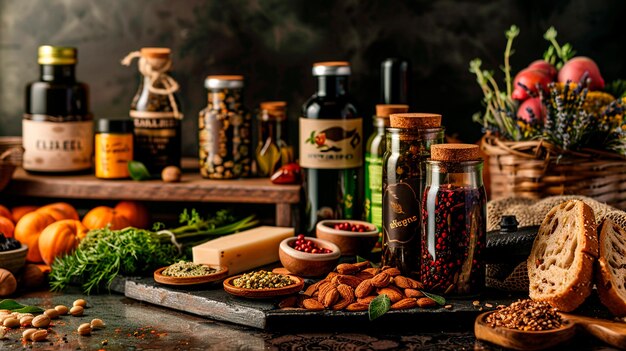
Seasoning and Marinades
Seasoning and marinading elk heart is an essential step to enhance its unique flavor and tenderize the tough texture. In this section, we will discuss various seasoning options and marinade recipes that can transform your elk heart dish into a savory culinary experience.
Seasoning Options
Herbs: Fresh herbs like thyme, rosemary, sage, and parsley can add an aromatic flavor to the elk heart. Rubbing these herbs directly onto the meat or incorporating them into a marinade will elevate the taste profile.
Spices: A blend of spices such as smoked paprika, garlic powder, onion powder, and black pepper can add depth and complexity to the dish. Use a generous amount of these spices when seasoning elk heart before cooking or incorporate them into marinades for an extra kick.
Marinade Recipes
Marinating elk heart is a simple yet effective method to infuse it with robust flavors and tenderize the meat. For best results, marinate the heart for at least 4 hours or overnight in the refrigerator. Here are some marinade recipes to try:
Citrus-Herb Marinade
Ingredients: 1/4 cup orange juice, 1/4 cup lemon juice, 2 tbsp olive oil, 3 cloves garlic (minced), 1 tbsp thyme (chopped), 1 tbsp rosemary (chopped), salt and pepper to taste.
Balsamic-Garlic Marinade
Ingredients: 1/2 cup balsamic vinegar, 1/4 cup soy sauce, 3 cloves garlic (minced), 2 tbsp brown sugar, 1 tbsp ginger (grated), and 1/4 cup olive oil.
Teriyaki Marinade
Ingredients: 1 cup soy sauce, 1/2 cup sake or rice wine, 1/2 cup sugar, 3 cloves garlic (minced), 1 tbsp ginger (grated), and 1 jalapeno pepper (sliced).
Barbecue Marinade
Ingredients: 1 cup barbecue sauce, 1/4 cup apple cider vinegar, 2 tbsp brown sugar, 1 tbsp paprika, 1 tbsp chili powder, and 1/4 cup olive oil.

VI. Cooking Techniques and Temperatures for Elk Heart
Elk heart is a delicious and nutritious cut of meat that can be prepared in various ways. Here are three popular cooking methods for elk heart, along with the recommended temperatures and cook times for each method.
Grilling:
Grilling is an excellent choice for elk heart as it allows the meat to develop a nice char and smoky flavor. Preheat your grill to medium-high heat (around 400°F or 205°C). Season the heart with salt, pepper, and your preferred herbs and spices. Grill for about 4-6 minutes on each side for medium-rare doneness (internal temperature of 135°F or 57°C). To achieve a perfect sear, place the heart on the grill directly over the hot spots. Rotate it occasionally to ensure even cooking.
Pan-Frying:
Pan-frying is a versatile method for cooking elk heart, allowing you to easily control the heat and cook the meat evenly. Heat a heavy-bottomed skillet over medium-high heat (around 350°F or 177°C). Dry the heart thoroughly with paper towels before cooking to prevent splattering. Season the heart with salt, pepper, and your preferred herbs and spices. Cook for about 3-4 minutes on each side for medium-rare doneness (internal temperature of 135°F or 57°C). To achieve a crispy exterior, use a little oil in the pan and cook the heart until it develops a golden brown crust. Be careful not to overcook or burn the heart.
Braising:
Braising is a great option for elk heart if you prefer a tender, fall-apart texture. Heat a Dutch oven or heavy-bottomed pot over medium heat (around 325°F or 163°C). Brown the heart on all sides in a little oil, then remove it from the pan. Add aromatics like garlic and onions to the pot and cook until softened. Deglaze the pan with wine or stock, then return the heart to the pot along with any desired herbs and spices. Cook covered for about 1-2 hours until the heart is tender and has developed a rich, savory flavor.
Tips:
– Always make sure the elk heart is free of any silverskin or sinew before cooking to prevent a tough texture.
– For a more tender heart, consider soaking it in a brine or marinade before cooking.
Summary:
Elk heart can be cooked using various methods, including grilling, pan-frying, and braising. Each method has its unique benefits and requires specific temperatures and cook times for desired doneness. By following these guidelines and focusing on achieving a perfect sear or crispy exterior, you’ll end up with delicious and juicy elk heart every time.
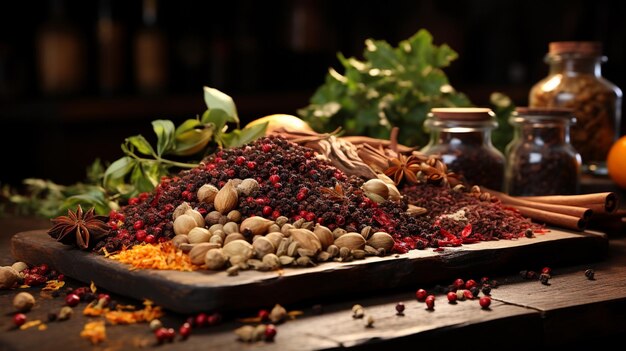
V Pairing Sides and Accompaniments
Elk heart, with its rich and robust flavor, calls for side dishes that not only complement but also enhance its natural taste. Here are some recommendations for sides that would make a perfect pairing:
Root Vegetables:
Roasted root vegetables are an excellent choice to balance the gamey flavors of elk heart. Their natural sweetness and earthy undertones make a wonderful counterpoint. Some popular root vegetables to consider include parsnips, turnips, beets, carrots, and rutabagas. Roasting these vegetables brings out their natural sugars while allowing them to absorb the savory elk heart juices.
Wild Rice or Quinoa:
Serve elk heart with wild rice or quinoa to add some textural contrast and nutty flavors. These grains can absorb the rich, savory juices from the elk heart and provide a satisfying base for the meal.
Fresh Salads:
A fresh salad, with bright and tangy ingredients, adds a refreshing contrast to the rich flavors of elk heart. Consider adding arugula, baby spinach, watercress, radishes, cherry tomatoes, or other seasonal greens to your salad. A simple vinaigrette made with olive oil, balsamic vinegar, and a touch of honey or maple syrup would make an excellent dressing.
Sauces and Condiments
Elk heart benefits from sauces and condiments that can elevate its natural flavors. Here are some suggestions for sauces that would make an excellent pairing:
Chimichurri:
A chimichurri sauce made with parsley, garlic, olive oil, and vinegar is a classic choice for elk heart. Its bright, tangy, and herbaceous flavors provide an excellent contrast to the rich gamey taste of the heart.
Bernaise Sauce:
A bernaise sauce, made with clarified butter, shallots, white wine vinegar, and egg yolks, adds a rich, creamy, and complex layer of flavor to the dish. This sauce complements elk heart’s bold taste while providing a luxurious dining experience.
Barbecue Sauce:
For those who prefer a sweeter and smokier taste, barbecue sauce is an excellent choice. Look for a high-quality barbecue sauce made with natural ingredients and low in added sugars to complement the elk heart’s rich flavors.
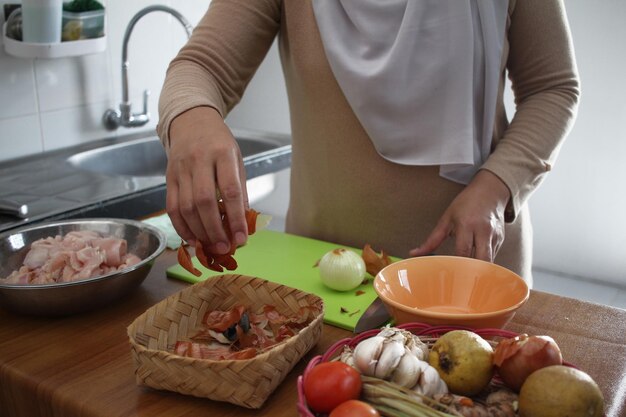
VI Safety and Food Handling Considerations
A. When handling and cooking elk heart, it is
Proper Storage:
Store the elk heart in a sealed container or wrap it securely to prevent contamination. Ensure the temperature is below 40°F (4.4°C) if refrigerated and below 0°F (-17.8°C) if frozen.
Cleaning:
Clean the elk heart thoroughly before cooking. Rinse it under cold running water and use a clean brush to remove any dirt or debris. Avoid cross-contamination by using separate utensils and cutting boards for the elk heart and other foods.
Cooking Temperatures:
Cook the elk heart at the proper internal temperature to ensure food safety. Aim for a minimum internal temperature of 135°F (57.2°C) as measured with a meat thermometer.
E. Testing for Doneness:
To test for doneness, use a meat thermometer to check the internal temperature frequently. Overcooking or undercooking the elk heart can lead to poor texture and taste. Aim for a final temperature of 150-160°F (65.5-71.1°C) for optimal texture and tenderness.
F. Avoiding Overcooking or Undercooking:
To avoid overcooking or undercooking, use a meat thermometer to check the internal temperature frequently. Monitor the heart’s color and texture as well. A pinkish hue and a slight give when pressed indicate that it is cooked to the desired doneness.
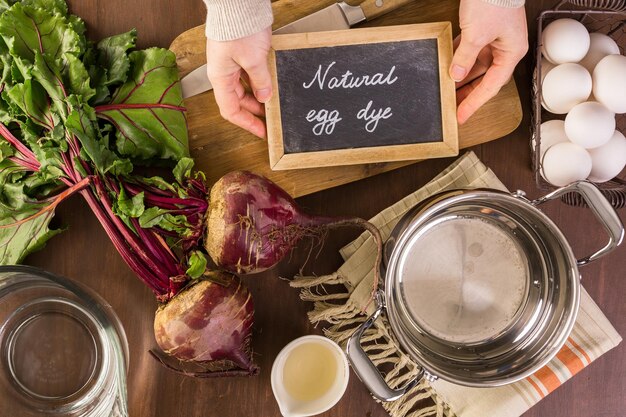
IX. Conclusion
As we reach the end of our exploration into preparing, seasoning, and cooking elk heart, it’s important to reflect on the journey we’ve taken. First, we started with selecting a fresh elk heart from a reliable source. Then, we cleaned it thoroughly and trimmed any excess fat. Next, we seasoned the heart with simple yet flavorful ingredients such as garlic, rosemary, thyme, and olive oil. Lastly, we cooked the elk heart to perfection on a cast-iron skillet over medium heat.
Recap
In summary, the process of preparing elk heart involves selecting a fresh heart, cleaning and trimming it, seasoning it with aromatic herbs and spices, and cooking it to a desired temperature. The result is a delicious and nutritious dish that is both satisfying and exciting.
Encouragement for Beginners
For those of you who have yet to embark on the adventure of cooking elk heart, we encourage you to give it a try. Not only does this dish offer a unique and delicious flavor experience, but it also comes with numerous nutritional benefits. Elk heart is an excellent source of protein, vitamins, and minerals that can contribute to a healthy and balanced diet.
Deliciousness
The taste of elk heart is unlike any other meat you’ve tried before. Its texture is tender and juicy, while its flavor is rich and gamey. The herbs and spices used in the seasoning process enhance the natural flavors of the heart, creating a dish that is both savory and satisfying.
Nutritional Value
Moreover, elk heart is a nutritious and lean source of protein. It contains high amounts of essential vitamins and minerals such as iron, zinc, and B vitamins. Eating elk heart can help support a healthy immune system, improve muscle growth and repair, and provide energy for your body.
Additional Resources
If you’re interested in exploring other wild game meats or want to learn more about cooking elk heart, there are plenty of resources available to you. Here are some suggestions:
Books
The Wild Game Cookbook: Hunting, Butchering, and Cooking Your Harvest by Gary Moulton is an excellent resource for anyone interested in cooking wild game meats.
Online Recipes
link offers a delicious recipe for elk heart with balsamic glaze that is both simple and flavorful.
Cooking Classes
link offers cooking classes and workshops for those who want to learn more about preparing and cooking wild game meats, including elk heart.
Local Butchers
Finally, consider reaching out to local butchers or hunting groups in your area. They may be able to provide you with fresh elk hearts and offer tips on the best ways to prepare and cook them.

